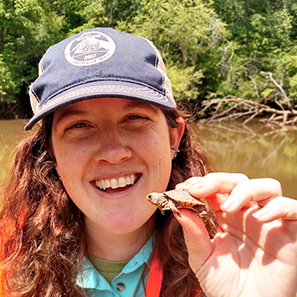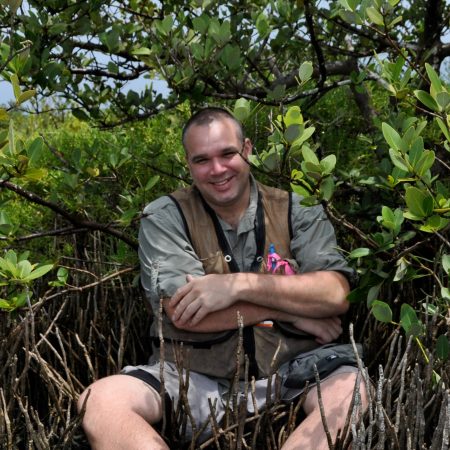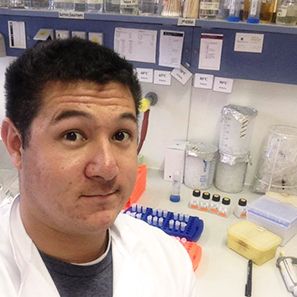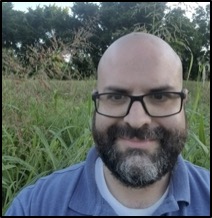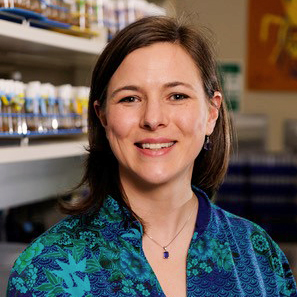Summer REU Program: Re-IMAGiNE Life, Exploring Function through Adaptation
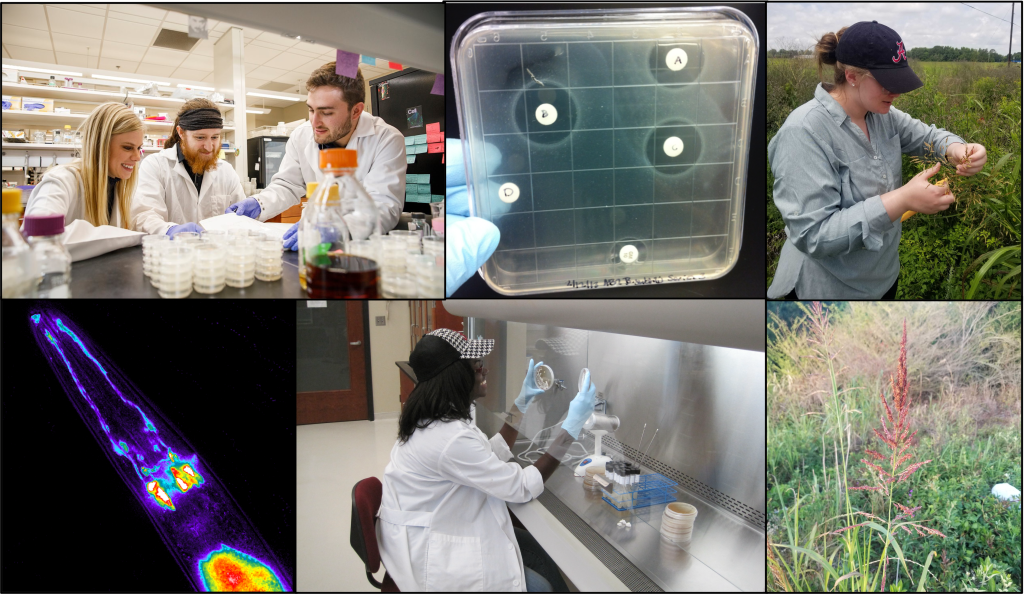
Timeline
- Final day to submit an application is March 1, 2024.
- Reference letters are accepted until March 1, 2024.
- Application review starts on March 2, 2024 and will continue until all positions are filled.
- REU program dates: May 19 – July 26, 2024
The UA REU application site is open, complete the REU Application here!
Applications require one reference letter from a professor to be complete. Letters are to be sent to Dr. Julie Olson (jolson@ua.edu) and Dr. Michael McKain (mrmckain@ua.edu) by February 23, 2024.
Understanding how genomic and environmental variation are integrated to give rise to complex traits via adaptation is one of the key challenges in biology. Although a wealth of genotypic and phenotypic data regarding how organisms respond under varying environmental conditions is now available, integrating this information into functional and predictive models of evolution continues to be challenging.
The focus of this REU site is Re-IMAGiNE Life, Exploring Function through Adaptation. This topic encompasses a wide variety of subdisciplines within biology and creates opportunities for lab and/or field-based, hands-on research by undergraduate students to explore the interplay of genomes, phenotypes, and environments at all levels of biological organization.
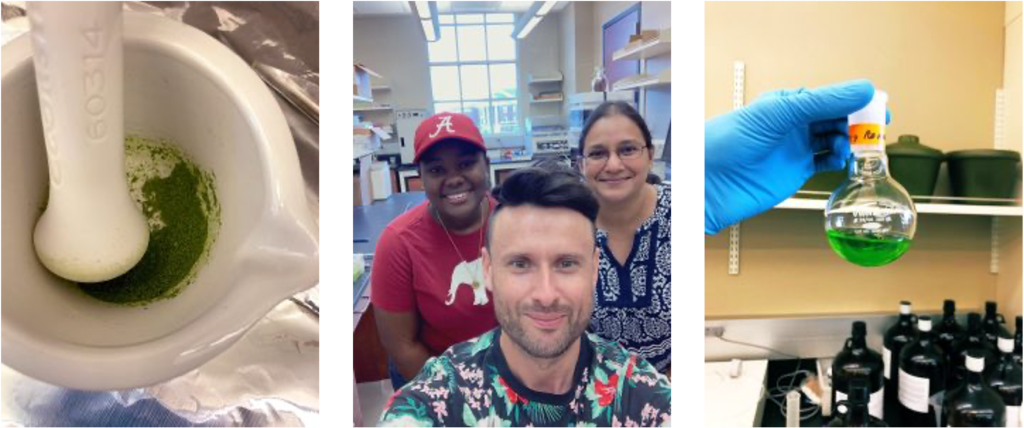
Program Highlights
- 10-week research training opportunity
- Students conduct individual research projects designed by faculty within the Department of Biological Sciences at The University of Alabama
- Weekly academic and professional development programs
- $6,250 stipend
- Paid on-campus housing
- $150 weekly food allowance
- Up to $600 relocation stipend
Students Who Benefit From This Experience
- Motivated students interested in learning more about what can be done with a degree in the life sciences
- Students considering graduate school
- Students within historically underrepresented groups, those with non-traditional backgrounds and academic paths, veterans, and first-generation college students are encouraged to apply
Requirements For Eligibility
- No prior research experience is needed but priority will be given to students who have completed at least one course in biology or a related discipline
- Undergraduates who will be enrolled at a 2- or 4-year college or university in Fall of 2024
- United States citizens or permanent residents (requirement of NSF)
- Applicants should be 18 years of age by May 19, 2024
What Should Students Expect?
- Robust training in modern and integrative scientific techniques
- Full time work commitment for the 10-week period
- Professional development, trips to local research centers, and networking with peers and faculty
- Opportunities to present and/or publish their findings
- Experience working in the labs of UA faculty
Faculty Mentors and Projects
Dr. Carla Atkinson
Adaptation of freshwater mussels to varying water temperatures
Freshwater mussels are filter-feeders, so their feeding improves water quality and clarity. However, how mussels may adapt to changes in stream temperature and chemistry as a result of global climate change is not known. The REU student will measure filtration rates in multiple native species in temperature-controlled laboratory trials. In addition, they will assist with an in-stream transplant experiement to examine how growth rates and gut microbial communities respond to varying abiotic conditions. The student will collect mussels from local rivers, tag and measure mussels, grow and maintain algal cultures, perform thermal acclimations and data analyses, and will have the opportunity to interact with local and European collaborators.
Visit Dr. Atkinson’s faculty profile.
Dr. Lukasz Ciesla
Molecular mechanisms of plant-derived dietary compounds for neuroprotective potential
The REU student will work closely with a graduate student on a project that focuses on understanding the molecular mechanism of action of certain dietary compounds. Healthy diet has been associated with lowering the risk of developing numerous aging-associated diseases, including neurodegenerative ailments. The student will explore the neuroprotective potential of certain dietary molecules using the Drosophila model of Parkinson’s disease. Additionally, the student will work closely with a graduate student on the development of analytical assays allowing our group to monitor the fate of these molecules in Drosophila.
Visit Dr. Ciesla’s faculty profile.
Dr. Ryan Earley
Deep in the mangroves of Florida, the Caribbean and Central America, there’s a fish that defies all odds and exhibits some truly remarkable characteristics. Mangrove rivulus fish live in some of the most challenging conditions on Earth and can tolerate dramatic fluctuations in oxygen levels, salinity, temperature, and water availability, as well as infiltration of pollutants into their natural environment. They are highly plastic and exist predominantly as self-fertilizing hermaphrodites, which allows (effectively) for production of clones. They can also change sex from hermaphrodite to male, live on land for 2 months, navigate terrestrial environments using Olympic jumps, and engage in intense combat. We have combined field and laboratory studies to examine a host of questions related to how genetic and genomic variation relate to variation in performance in the tumultuous mangrove swamps.
Visit Dr. Earley’s faculty profile.
Dr. Melanie Higgins
Molecular pathway discovery of hygromycin A biosythesis
Hygromycin A is a broad spectrum antibiotic that is produced by certain bacteria found in the soil. Our lab aims to learn how these bacteria make hygromycin A. The project will involve generating bacterial mutants to make hygromycin A intermediates. These intermediates will then be used to learn more about the enzymes involved in hygromycin A biosynthesis. Techniques that the REU student will learn are: bacterial transformations, PCR, compound extraction and isolation, protein production and purification, and biochemical analysis.
Visit Dr. Higgins’ faculty profile.
Dr. Atulya Iyengar
The Iyengar Neurogenetics Lab is broadly interested in the genetics of behavior. We use the fruit fly, Drosophila melanogaster, as a model organism as we can readily manipulate the genome of the fly, and we can observe corresponding changes in brain activity or behavior. We are particularly excited to find genetic or environmental factors that alter abnormal behavior patterns or neurological disease-like phenotypes. The REU student can expect to perform genetic crosses, behavioral analysis, and potentially undertake assays to monitor brain activity patterns.
Visit Dr. Iyengar’s faculty profile.
Dr. Matthew Jenny
Physiological mechanisms of adaptive thermal tolerance
The summer REU student will participate in an ongoing project that seeks to determine how variation in metabolic physiological mechanisms contribute to differences in thermal tolerance in two different populations of the fathead minnow (Pimephales promelas) that differ in their latitudinal location (northern versus southern populations). We will specifically generate a cohort of offspring from adults collected from the two different populations and each cohort will be raised to adulthood under one of three different thermal regimes (20, 24 and 28 C). Using different subsets of fish from each population and thermal regime, we will perform a series of metabolic and physiological assessments at different points in their development and maturation under ambient regime temperatures, as well as after a series of acute temperature challenges. This proposed research will provide insight into thermal tolerances from different populations and expand our understanding of the role of thermal acclimation in determining physiological plasticity. Finally, the proposed research will allow us to compare a variety of cellular and enzymatic endpoints to determine which of these serve as good predictors of thermal tolerance.
Visit Dr. Jenny’s faculty profile.
Dr. Brandon Kim
Analysis of microbial gene networks at the blood-brain interface
Group B Streptococcus and Neisseria meningitidis are pathogenic bacteria that are able to cross the highly specialized blood-brain barrier and cause bacterial meningitis. The REU student will be incorporated in the examination of potential Group B Streptococcal virulence factors that contribute to bacterial meningitis. To do so we have engineered Group B Streptococcus’ Cas9 to provide a tool for CRISPR interference – which is a method to rapidly knockdown expression of candidate genes and test them for phenotypes. The student will design guide RNA, ligate into our guide RNA vector, and transform into Group B Streptococcus. They will then use cell-based assays to determine how the candidate gene impacts Group B Streptococcal interaction with the blood-brain barrier.
Visit Dr. Kim’s faculty profile.
Dr. Michael McKain
Impacts of polyploid genome diploidization on the invasive potential of a grass species
Polyploidy is a common phenomenon in flowering plants and has been identified as a potential promotor of invasiveness. After polyploidy, genomes undergo diploidization that includes the loss of duplicated genes, reorganization of chromosomes, changes in expression patterns and other processes. The patterns of diploidization are likely a combination of stochastic and predetermined factors that, when coupled with natural selection, lead to lineage-specific variation. The REU student will use field work, genomics, and computational biology to investigate how diploidization has varied across populations and lineages of the allotetraploid species Sorghum halpenese as it spread across the US.
Visit Dr. McKain’s faculty profile.
Dr. Julie Olson
Factors that increase the expression of secondary metabolites in environmental bacteria
Many species of bacteria produce secondary metabolites, providing an advantage to the producing organism. However, other than entering stationary phase or exhaustion of a required nutrient, the environmental conditions that induce secondary metabolite formation in these organisms are not well understood. The REU student will investigate the effect of different environmental conditions (e.g., temperature, pH) on the production and diversity of secondary metabolites using a combination of microbiological cultivation methods, bioassays, and molecular genetic techniques.
Visit Dr. Olson’s faculty profile.
Dr. Laura Reed
Examination of the evolutionary processes shaping metabolic regulation of homeostasis
The REU student will have one of two possible research foci. The first project is focused on genomic and bioinformatic analyses to analyze how groups of related genes evolve. The second would be to analyze how flies respond to variations in diet and exercise. In either project, the student would be part of a collaborative team working together on the research.
